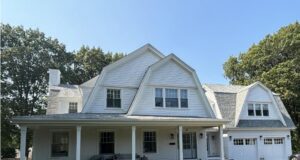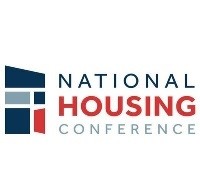Costs include plumbing, roofing upgrades and lead removal that would improve
basic living conditions for 2.1 million residents
WASHINGTON, DC – June 24, 2011 – (RealEstateRama) — The U.S. Department of Housing and Urban Development today released a study that finds the nation’s 1.2 million public housing units need an estimated $25.6 billion for large scale repairs. This study updates a 1998 analysis and includes costs to address overdue repairs, accessibility improvements for disabled residents, lead abatement, and water and energy conservation that would make the homes more cost effective and energy efficient.
HUD’s study, Capital Needs in the Public Housing Program, updates the national estimate of capital needs in the public housing stock in the U.S. Unlike routine maintenance, capital needs are the large-scale improvements required to make the housing decent and economically sustainable, such as replacing roofs or updating plumbing and electrical systems to increase energy efficiency. The study also includes the first extensive look at the estimated cost of energy and water conservation projects.
“The new capital needs estimate far exceeds our annual budget for these repairs and illustrates why America needs a long-term strategy to address the loss of thousands of public housing units annually,” said HUD Secretary Shaun Donovan. “At a time when budget deficits require the Federal government to tighten its belt, many of the nation’s public housing units are buckling under a severe backlog in capital needs. Public housing owners are forced to make tough choices between repairing roofs and replacing plumbing – or worse, demolishing units altogether – because there simply isn’t enough money to go around. That’s why we introduced Choice Neighborhoods and our new Rental Assistance Demonstration as part of our comprehensive strategy to keep these homes on firm financial footing.”
Despite public housing programs created to address severely distressed public housing, such as HOPE VI, or initiatives to raise capital to make major improvements to the public housing stock, such as HUD’s Capital Fund Financing Program, the country is still losing several thousands of public housing units per year. And even though housing authorities have renovated and developed nearly 380,000 publicly owned affordable homes using the $4 billion they received through the American Recovery and Reinvestment Act of 2009, the need for a solution to preserve the housing stock remains great.
In November 2007, Congress directed HUD to compute new national estimates of capital needs and compare them to prior estimates from 1998. HUD began the new study in April 2008 and determined the total capital needs estimate, commonly referred to as the “backlog,” is $25.6 billion or approximately $23,365 per unit. Moreover, the study determined that with normal use and aging, each year the units accrue an additional $3.4 billion of needed repairs and replacements – or roughly $3,155 per unit. These accrual costs exclude routine maintenance costs and are calculated based on the assumption that the backlog is met.
According to HUD’s analysis, a simple comparison of 1998 and 2010 data reveals the estimated total backlog of capital need decreased by approximately 3.4 percent over 12 years. Part of this decrease is explained by a nine percent decline in public housing units in 2010 and an increase in average per unit repair cost. The new study estimated that annual accrual needs climbed by 15 percent from 1998, due in part to lagging repairs to major systems that eroded their overall lifespan.
HUD has proposed a number of new initiatives to address this backlog, including Choice Neighborhoodsand the Rental Assistance Demonstration (RAD). Choice Neighborhoods provides grant funding to demolish and redevelop public and assisted housing while RAD seeks to address the backlog and future need in the entire public housing stock by allowing private investment in the stock. Both programs are part of a comprehensive strategy proposed by the Obama Administration to offer a long term solution to preserve and enhance the country’s affordable housing stock, including leveraging public and private funding to make much-needed improvements.
###
HUD’s mission is to create strong, sustainable, inclusive communities and quality affordable homes for all. HUD is working to strengthen the housing market to bolster the economy and protect consumers; meet the need for quality affordable rental homes: utilize housing as a platform for improving quality of life; build inclusive and sustainable communities free from discrimination; and transform the way HUD does business. More information about HUD and its programs is available on the Internet at www.hud.gov and espanol.hud.gov.
Contact:
Donna White
(202) 708-0685














